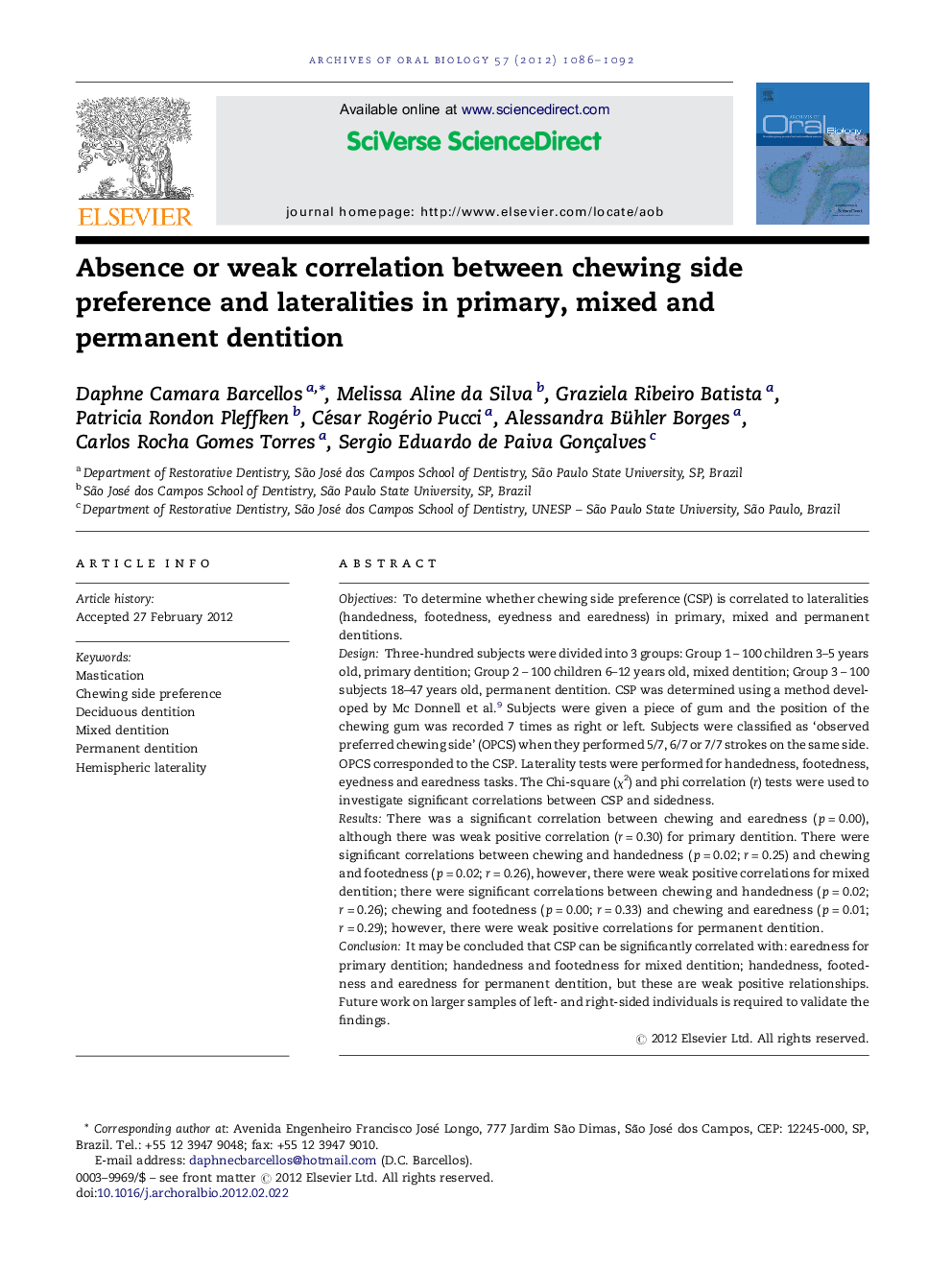| کد مقاله | کد نشریه | سال انتشار | مقاله انگلیسی | نسخه تمام متن |
|---|---|---|---|---|
| 6051019 | 1583333 | 2012 | 7 صفحه PDF | دانلود رایگان |

ObjectivesTo determine whether chewing side preference (CSP) is correlated to lateralities (handedness, footedness, eyedness and earedness) in primary, mixed and permanent dentitions.DesignThree-hundred subjects were divided into 3 groups: Group 1 - 100 children 3-5 years old, primary dentition; Group 2 - 100 children 6-12 years old, mixed dentition; Group 3 - 100 subjects 18-47 years old, permanent dentition. CSP was determined using a method developed by Mc Donnell et al.9 Subjects were given a piece of gum and the position of the chewing gum was recorded 7 times as right or left. Subjects were classified as 'observed preferred chewing side' (OPCS) when they performed 5/7, 6/7 or 7/7 strokes on the same side. OPCS corresponded to the CSP. Laterality tests were performed for handedness, footedness, eyedness and earedness tasks. The Chi-square (Ï2) and phi correlation (r) tests were used to investigate significant correlations between CSP and sidedness.ResultsThere was a significant correlation between chewing and earedness (p = 0.00), although there was weak positive correlation (r = 0.30) for primary dentition. There were significant correlations between chewing and handedness (p = 0.02; r = 0.25) and chewing and footedness (p = 0.02; r = 0.26), however, there were weak positive correlations for mixed dentition; there were significant correlations between chewing and handedness (p = 0.02; r = 0.26); chewing and footedness (p = 0.00; r = 0.33) and chewing and earedness (p = 0.01; r = 0.29); however, there were weak positive correlations for permanent dentition.ConclusionIt may be concluded that CSP can be significantly correlated with: earedness for primary dentition; handedness and footedness for mixed dentition; handedness, footedness and earedness for permanent dentition, but these are weak positive relationships. Future work on larger samples of left- and right-sided individuals is required to validate the findings.
Journal: Archives of Oral Biology - Volume 57, Issue 8, August 2012, Pages 1086-1092